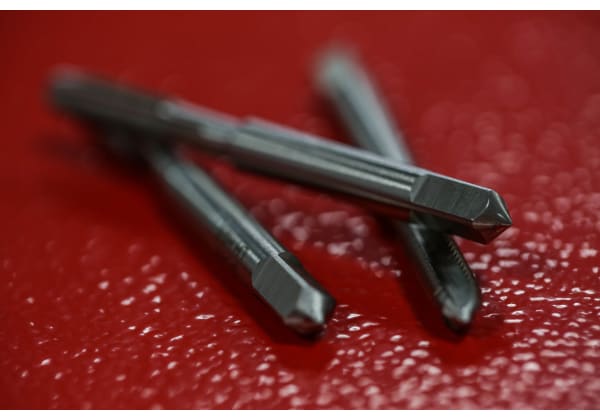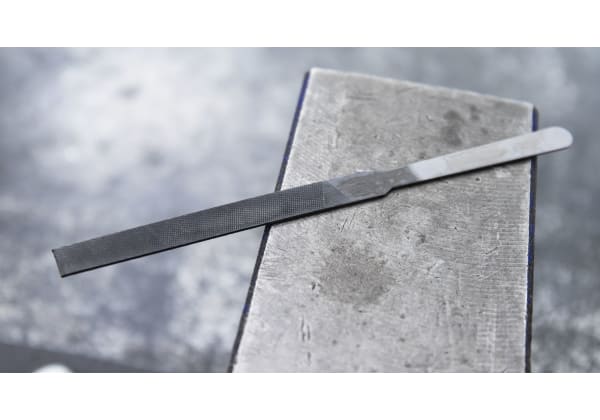- Published 23 Oct 2024
- Last Modified 23 Oct 2024
- 6 min
Guide to Breaker Bars
The breaker bar is an easy to use, powerful, and versatile tool for undoing the most stubborn of fasteners. Our guide explains more.
If you need higher torque and leverage than a standard spanner can provide, you may want to consider using a breaker bar. These outsize, non-ratcheting bars are ideal for loosening very tight, rusted, or frozen fasteners when ordinary spanners, wrenches, or ratchets won’t do the job. Read this guide to discover what breaker bars are, when and where they should be used, and how they compare to other tools.
What is a Breaker Bar?
What is a breaker bar and what are breaker bars for? Sometimes you need a particularly heavy-duty tool to loosen a fastening. Enter the breaker bar, which ‘breaks’ fastenings open, hence the name. Breaker bars are much longer than a standard spanner: Breaker bar sizes may be as much as 300mm to 600mm longer than a typical wrench.
This extra length enables the user to generate much more torque with the bar with a similar amount of force, meaning it can unfasten even very stubborn fastenings quickly (often loosening them enough in just a half-turn to enable a spanner to subsequently be used). Using a breaker bar can prevent a situation where your spanner or ratchet is damaged because of a particularly tricky fastening.
What is a Breaker Bar Used For?
When should you use a breaker bar? Nuts and bolts are sometimes too tightly fastened to be loosened with a conventional spanner, socket set, or wrench. Or fasteners may be frozen shut, or too caked in rust to move easily. In these situations, a breaker bar can be used initially, together with a spanner, sockets, and wrenches to further loosen the fastening.
Can you tighten with a breaker bar? Generally, it’s not a great idea. Because breaker bars generate a lot of torque, it’s best not to tighten nuts or bolts with them. The level of torque can be too high for the job, resulting in over-tightening or damaging the nut or bolt.
Breaker Bar Benefits
The biggest benefit of a breaker bar is that it provides much more torque to loosen a fastening for the same amount of force. Because breaker bars are long, they can also reach distant fixings, while still applying enough torque to get them loose. Breaker bars also have benefits in situations where spaces are confined and there isn’t a lot of room to operate because of the high level of torque they generate. Breaker bars also provide a faster alternative to using a torque wrench. Finally, breaker bars are simple to use for everyone from mechanics and engineers and technicians to DIY enthusiasts. Their ease of application makes breaker bars hand tools anyone can get to grips with.
How to Use a Breaker Bar
While breaker bars are straightforward to use, there are some tips to bear in mind. First, select the right size of breaker bar for the job. RS carries lines of the best breaker bars in polished chrome that are durable and easy to maintain, and a range of breaker bar types and lengths.
Then, when considering what goes on the end of a breaker bar, you need to think about sockets. You’ve chosen your breaker bar size, but it’s also important to select the right size of socket for the fastener you want to loosen and attach it securely to the breaker bar. Get the socket size wrong and you run the risk of slipping while using the bar. For best results, it’s important to apply force smoothly – think steady pressure – and not in jerky or uneven motions. By adjusting your body position and body weight you can increase leverage as required. Don’t forget to also consider lubricating the bolt if it’s particularly troublesome or covered in rust. Heat can also be carefully applied with a torch to loosen fasteners. This can help prevent damage.
What Size Breaker Bar to Use
You’ll probably be asking yourself, ‘What size breaker bar do I need?’ Successfully breaking stubborn nuts and bolts requires the correct amount of leverage. If a breaker bar is too short, it may be impossible to generate the torque required to loosen the fastening. Breaker bars of up to 600mm in length should be enough for the majority of jobs. Some breaker bars are also extendable, so they can be adjusted depending on the job and amount of torque required.
Impact Wrench Vs Breaker Bar
In some cases, you may consider whether to use an impact wrench to loosen a fastening. What is an impact wrench? An impact wrench is powered by air or an electric motor. It creates a forceful twisting motion that can be used to either loosen or tighten fasteners. This tool is often used on vehicle wheel hubs and may be the best choice for some rusty fasteners where the bolt benefits from the action of being hammered forward with some force. But if you’re asking, ‘are breaker bars worth it,’ the answer is a resounding ‘yes.’ When large amounts of torque are needed to loosen the fastener, the breaker bar tops the impact wrench. The bar is also likely to be more useful in tricky, confined spaces. Because of this, many mechanics and engineers start with impact wrenches but will finish jobs using a breaker bar.
Ratchet Vs Breaker Bar
Now let’s consider the merits of a ratchet versus breaker bar. Ratchets are great for certain jobs, such as rapidly removing or adding fasteners. They work well when the nut or bolt have threads that are in good condition and there isn’t over-tightening, rust, or other forms of damage. But if a fastener has seized up badly, applying a lot of force with a ratchet can make the situation worse by damaging the threads and can break the ratchet.
When it comes to spanner versus breaker bar, spanners are great for everyday loosening and tightening of nuts and bolts but do not generate the rotational force of a breaker bar. This means a spanner is unlikely to be up to the job of breaking a severely seized-up fastener.
Breaker Bar Applications
What is a breaker bar tool used for? Breaker bars are widely used in automotive applications. They are also used in the construction industry for maintaining heavy plants and machinery or taking scaffolding to bits. Building engineers also use breaker bars to loosen troublesome nuts and bolts that are part of structures on site. And because breaker bars are so easy to use, they also find favour in the home for all manner of DIY projects, from disassembling furniture to repairing cars in the garage.
The breaker bar truly is a versatile and powerful tool in the engineer’s armoury.
RS has hand tools for a wide variety of uses. Explore our range and find out more about RS.



